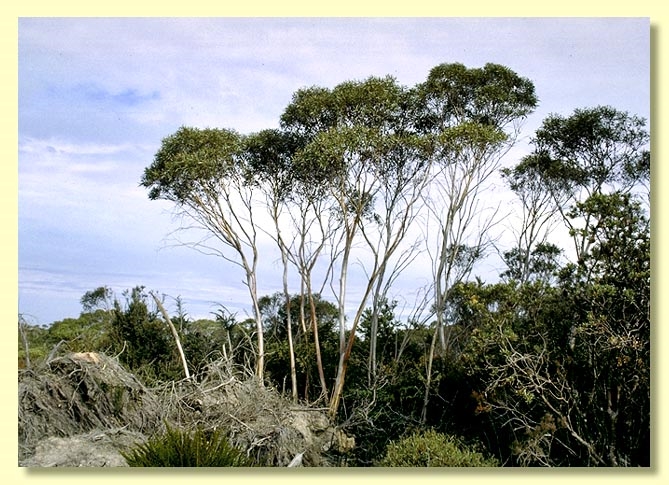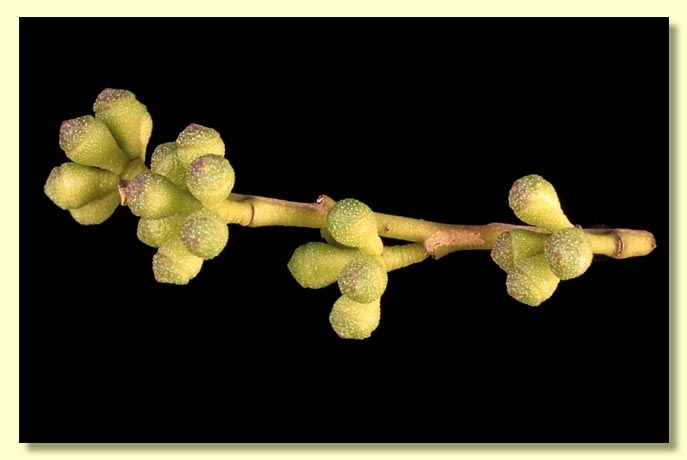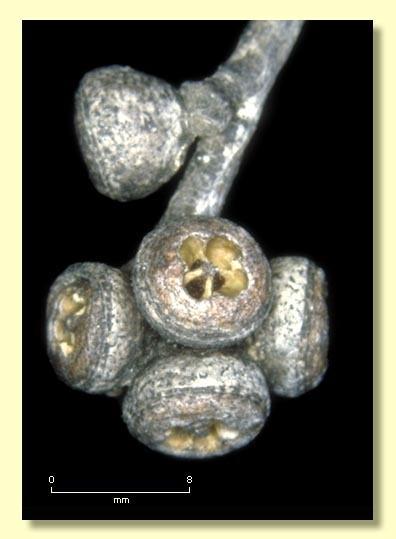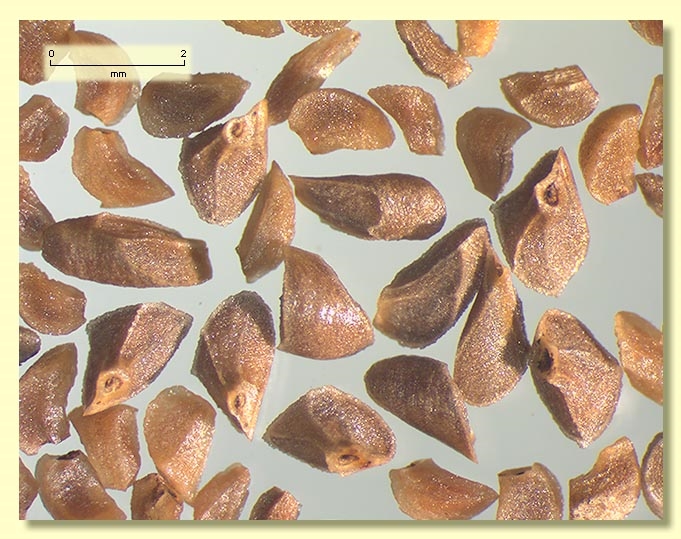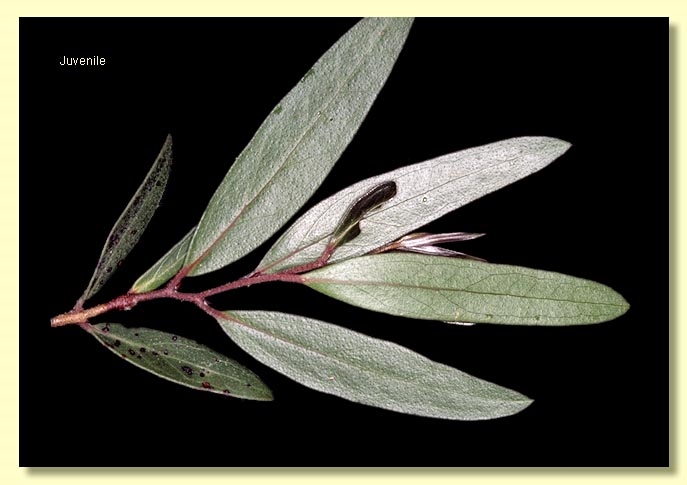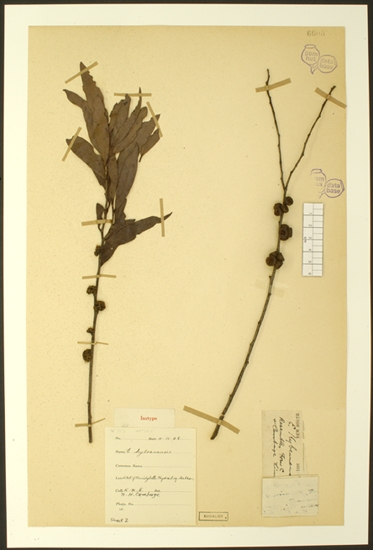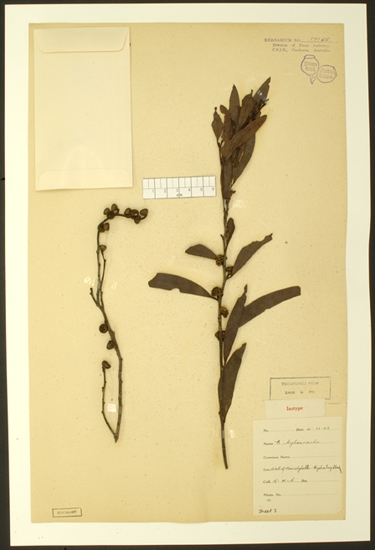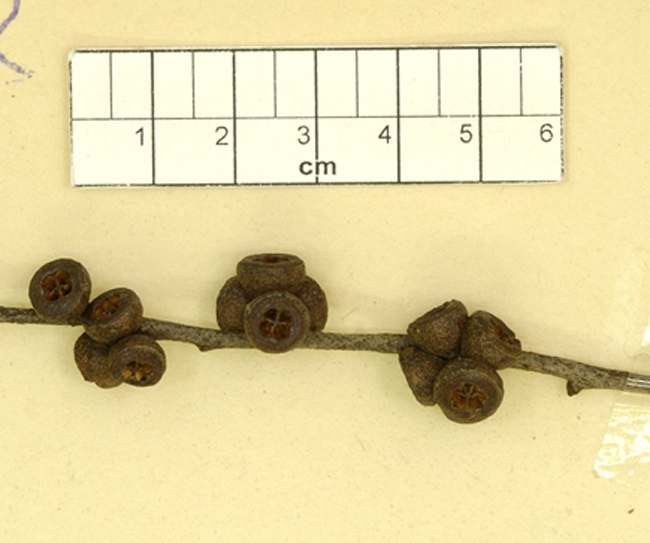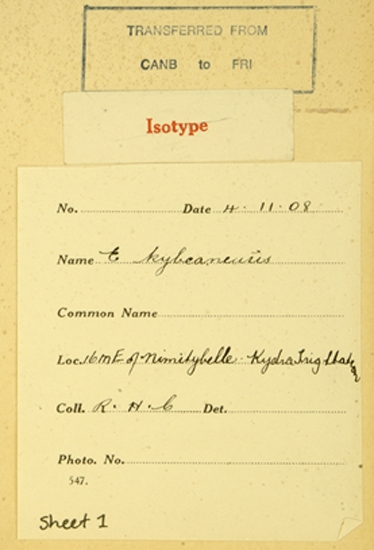Euclid - Online edition
Eucalyptus kybeanensis
Eucalyptus | Eucalyptus | Eucalyptus | Contiguae
Bark smooth, white to cream, coppery, brown, green-grey or yellow-green, or pink-grey, often with scribbles, often with ribbons of decorticated bark in the upper branches.
Juvenile growth (coppice or field seedlings to 50 cm): stem rounded in cross-section, warty; juvenile leaves opposite and subsessile for 2 or 3 nodes then alternate, petiolate, lanceolate to falcate, 3.5–8.5 cm long, 0.6–1.6 cm wide, held erect, glossy, green.
Adult leaves held more or less erect, alternate, petiole 0.3–0.8 cm long; blade lanceolate to falcate (sometimes nearly linear), 5–11 cm long, 0.5–1.5 cm wide, base tapering to petiole, concolorous, glossy, green, side-veins obscure to acute, the midrib and intramarginal veins are often the only visible veins, intramarginal vein well removed from margin, oil glands island.
Inflorescence axillary unbranched, peduncles 0.1–0.5 cm long, buds 7, 9 or ?11 per umbel, sessile or pedicels only 0.1 cm long. Mature buds obovoid to oblong, 0.4–0.5 cm long, 0.4 cm wide, green to yellow to red, smooth or warty, scar absent, operculum rounded to flattened, sometimes apiculate, stamens inflexed, anthers reniform to cordate, versatile, dorsifixed, dehiscing by (usually) confluent slits, style short or long, stigma tapered, locules 4 or 5 each with 2 vertical ovule rows. Flowers white.
Fruit sessile (rarely pedicel 0.1 cm long), obconical or hemispherical, 0.4–0.6 cm long, 0.5–0.9 cm wide, disc raised, or level, or slightly descending, raised disc convex, oblique, or annular, valves 4 or 5, near rim level.
Seeds brown or reddish brown, 1.5–2.2 mm long, pyramidal or obliquely pyramidal, dorsal surface smooth, hilum terminal.
Cultivated seedlings (measured at ca node 10): cotyledons reniform; stems rounded in cross-section, warty; leaves opposite and subsessile for ca 4 nodes then alternate, shortly petiolate, lanceolate, 1.5–11 cm long, 0.7–2.8 cm wide, base tapering, margin entire, apex pointed, slightly discolorous, green.
Flowering has been recorded in September, October, November and December.
A mallee or small tree restricted to high, subalpine country in south-eastern New South Wales (e.g. Wadbilliga, Munyang Range, Guthega, Geehi Creek) and eastern Victoria (Mt Seldom Seen, Mt Wellington, Mt Skene). Eucalyptus kybeanensis is a smooth-barked with glossy green adult leaves with little venation visible, blunt buds in clusters of 7-9(?11) and more or less obconical fruit.
E. kybeanensis may be confused with the green-leaved mallee ashes, e.g. E. stricta, but differs, apart from the higher altitude occurrence, by the round oil glands of the leaves (irregular in E. stricta), the squat buds with a somewhat domed operculum (pointed in E. stricta) and the crowded, obconical fruit (more or less barrel-shaped in E. stricta). It is easily distinguished from the snowgums with which it grows by the crown of erect, narrow leaves.
Eucalyptus kybeanensis is the only species in Eucalyptus subgenus Eucalyptus section Eucalyptus series Contiguae because of the following combination of characters: mallee habit with smooth bark; alternate, green juvenile leaves held erect; adult leaves held erect and with more or less obscure venation; single axillary inflorescences more or less sessile buds in clusters of seven or nine, with buds having only one operculum, reniform anthers, ovules in two rows; and more or less pyramidal seeds.

